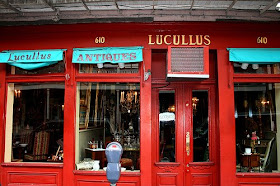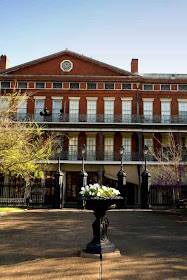We stayed in town, and I gave the living room some summer touches.
No I didn't repaint it all white, but I did add some more white to the room.

First a good cleaning, and a change of drapes. Down came the green velvet. Then I moved the white sheer curtains from the bedroom into the living room. I often move things to different rooms, kind of "shopping" the house for a new look.

The room is flooded with light and feels so airy, so much like summer.
I also swapped out the gilded wheat sheaf base and glass coffee table for this white mid century cutie. I cannot just confine myself to one era ha ha, so I mix all the centuries together.
I also removed the black and white stripe rug and swapped it out for the cow hide which was in the guest bedroom. I love the hide rugs because they hide everything, i.e. dog hair and dirt. And I love seeing more of the floor for summer too.

The morning light is just fabulous. By mid morning it moves from the front of the house, so even though the room is light filled, it's not hot from the sun pouring in.

The art work in the living room is comprised of all portraits. It's my little portrait gallery.
I love to hang art low. It pleases my eye.

I purposely did not put side tables next to the antique French settee, though you know I have them! I had a smaller version of the coffee table, and decided to float both of them, one in front of the settee, and one in front of the sofa. I flipped the settee and sofa from their "winter" positions.

The Thomas Paul pillow with the Greco-Roman head, the portrait of Kenny, and even the little sculpted head in the tray of shells, all add to portrait gallery.

I also added a sweet little green chair, the Philippe Starck Mademmoiselle Chair. The pop of green and the clear Lucite legs add just the right amount of sparkle.

I mix a variety of prints, and the green chair has a tone on tone damask to add to the fun.

I often pick the ginger from the yard for the living room, and the fresh green of the leaves plays along with the green chair.

The Will Barnett portrait entitled "The Young Couple" has subtle shades of green too, and the bunch of giant green grapes make a nice still life.

Another corner has a metal etagere, with two of my favorite portraits, one of Cholo done by Patricia from PVE, and the other of my friend Trevor, who I snapped at Castle Howard when we visited a friend there together.

Cholo loves the new arrangement. He has so many places to choose to snuggle on, like this vintage chair recovered in a Duralee print.

The corner with the chaise is Alberto's hang out.

The tray on the coffee table holds shells, and other special little things like this box of calling cards Alberto had printed when he graduated from The University of Buenos Aires over 40 years ago!

Since we'll be spending most of our summer at home this year, I am so happy that the living room has been dressed in summer whites. It feels like we've gone someplace new and pretty for a holiday.
So take a look around your house, and see what you can move around to refresh a room for summer!









































